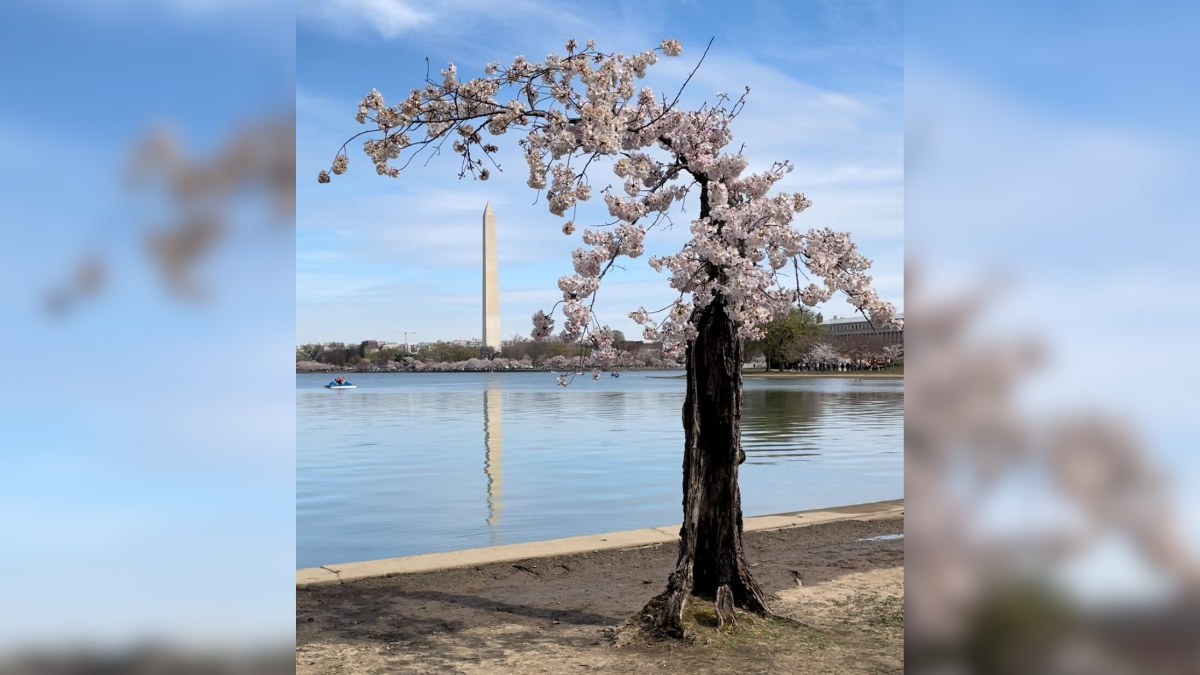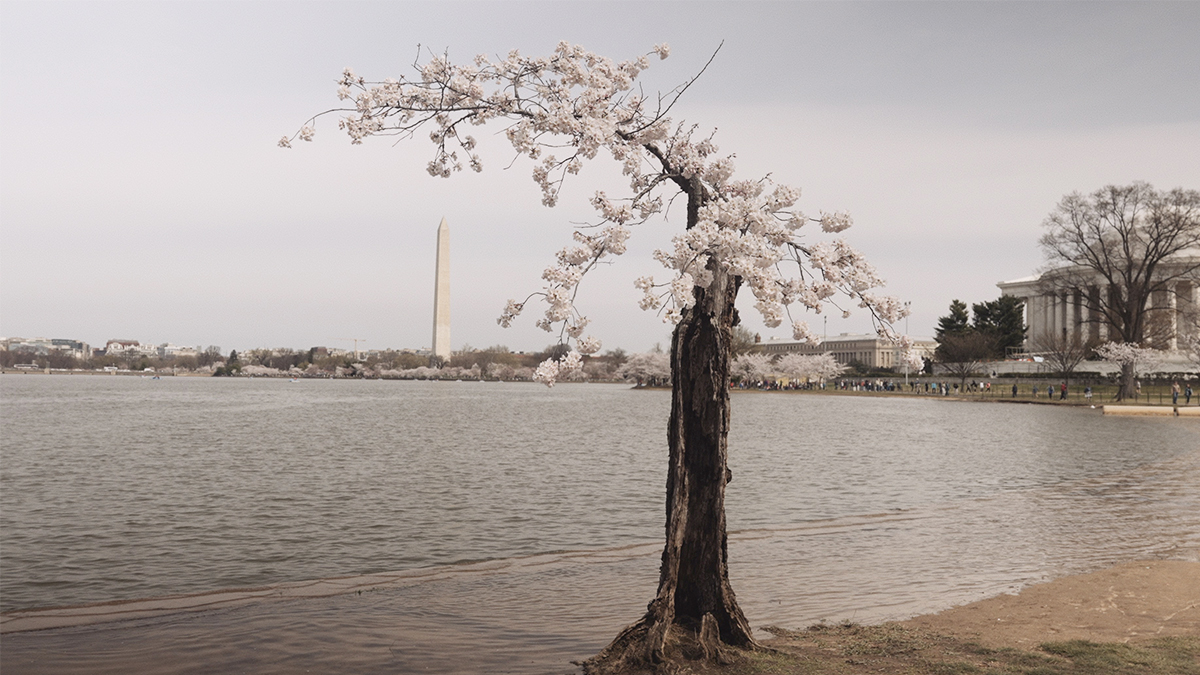
If you stopped by the Tidal Basin this spring to see the cherry blossoms, you may also have noticed the encroaching water covering parts of the walkway. But on Thursday, the National Park Service announced a plan to help mitigate the effects of the flooding.
Flood waters at the Tidal Basin aren't new. In fact, over the past 25 years, the sea level has risen about three inches, putting the cherry trees and their root systems at risk.
Rising sea levels have compounded with the sinking Tidal Basin seawall, causing walkways, trees roots and even benches to end up under water.
"The benches are under water regularly," Litterst said. "When I got here in 2014, that was an every couple or three or four months sort of thing. Now it's several times a week."
The most famous example of the negative effects of flooding on those trees is Stumpy, a cherry blossom season celebrity in the District.
The threadbare tree looks as scraggly as he does because of the brackish water that regularly floods his home.
And twice a day at high tide, water overlaps the walkway at the Tidal Basin, despite the fact that the walkway has already been relocated once.
"We, in fact, moved the walkway a little further inland a number of years ago," National Park Service (NPS) spokesman Mike Litterst told News4 in 2022. "But even a couple of times a month, we will get tides high enough that even that rearranged path winds up under water a couple of times."
Thursday, an evaluation of the effect of a plan to renovate the Tidal Basin seawall found that it had no significant environmental impacts "on the natural, cultural or human environment" in the area, the NPS said in a news release.
The preferred plan that the NPS chose and approved after that environmental assessment will make the following changes to the seawalls:
- Nearly 7,000 linear feet of seawall along West Potomac Park and parts of the Tidal Basin will be "rehabilitated," with the goal to "extend the seawall's life by approximately 100 years," the NPS said.
- The seawall will get 4.75 feet taller around the Tidal Basin and 5.50 feet taller along West Potomac Park "to account for wind and wave conditions along the Potomac River."
- The rebuilt seawall will add a new foundation. The change will keep the seawall from sinking further, and support the weight of any future height extensions needed if sea levels keep rising.
- The walkways around the Tidal Basin will be widened from eight feet to 12 feet wide. That will make the paths around the basin more accessible, and better connect them to other pathways.
The project will "salvage and reuse stones from the historic wall in the rehabilitated seawalls," the NPS added.
The next step in the rehabilitation project is for the NPS to look at different bids for the construction project. Funding for the planning and environmental compliance part of the project, and for the construction, comes from the Great American Outdoors Act, the NPS said in the release.
Work is expected to begin on the seawall rehabilitation project in the summer of 2024.



